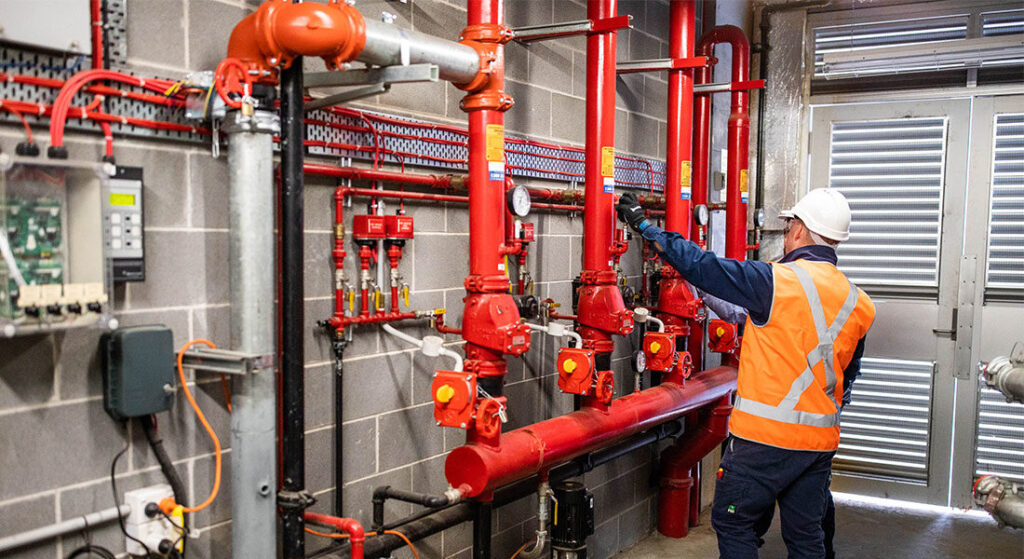Life and safety are fundamental aspects of human existence, encompassing a broad spectrum of activities and measures aimed at protecting individuals from harm and ensuring their well-being. From workplace safety protocols to emergency preparedness, the importance of life and safety cannot be overstated. This article provides a comprehensive overview of life and safety, exploring various domains, best practices, and the significance of fostering a culture of safety in our daily lives.

The Importance of Life and Safety
The concept of life and safety revolves around the prevention of accidents, injuries, and illnesses, as well as the protection of physical, mental, and emotional health. Ensuring safety is crucial not only for individual well-being but also for the functioning of communities, organizations, and societies as a whole. The following points highlight the importance of prioritizing life and safety:
- Preservation of Life: The foremost goal of safety measures is to protect lives. Whether it’s through road safety regulations, workplace safety protocols, or health and hygiene practices, safeguarding life is paramount.
- Prevention of Injuries and Illnesses: Effective safety measures help prevent accidents and reduce the incidence of injuries and illnesses. This, in turn, minimizes the burden on healthcare systems and improves the quality of life.
- Economic Benefits: By preventing accidents and illnesses, safety measures can lead to significant economic savings. This includes reducing medical costs, minimizing productivity losses, and lowering insurance premiums.
- Enhancement of Productivity: A safe environment fosters a sense of security and well-being, which can enhance productivity and performance. When individuals feel safe, they are more likely to be focused, motivated, and engaged in their tasks.
- Legal and Ethical Responsibilities: Ensuring safety is both a legal and ethical obligation. Organizations and individuals have a duty to comply with safety regulations and to protect others from harm.
Domains of Life and Safety
Life and safety encompass various domains, each with its unique challenges and requirements. The following sections explore some of the key areas where safety measures are essential:
Workplace Safety
Workplace safety involves implementing measures to protect employees from hazards and ensure a safe working environment. This includes:
- Occupational Health and Safety (OHS) Programs: These programs aim to identify, assess, and control workplace hazards. They include safety training, risk assessments, and the implementation of safety protocols.
- Personal Protective Equipment (PPE): Providing appropriate PPE, such as helmets, gloves, and masks, is crucial in protecting employees from physical, chemical, and biological hazards.
- Ergonomics: Designing workstations and tasks to fit the physical capabilities of employees can prevent musculoskeletal disorders and improve comfort and productivity.
- Emergency Preparedness: Developing and practicing emergency response plans, including fire drills and evacuation procedures, ensures that employees know how to respond in case of emergencies.
Home Safety
Home safety involves creating a secure living environment to protect individuals and families from accidents and injuries. Key aspects include:
- Fire Safety: Installing smoke detectors, maintaining fire extinguishers, and developing a fire escape plan are essential for preventing and responding to fires.
- Fall Prevention: Implementing measures such as securing rugs, installing handrails, and ensuring adequate lighting can reduce the risk of falls, particularly for the elderly and children.
- Poison Prevention: Storing household chemicals, medications, and cleaning products out of reach of children and labeling them clearly can prevent accidental poisonings.
- Electrical Safety: Regularly inspecting electrical appliances, avoiding overloading outlets, and using surge protectors can prevent electrical hazards and fires.
Road Safety

Road safety aims to protect drivers, passengers, and pedestrians from traffic accidents and injuries. Key measures include:
- Traffic Regulations: Enforcing speed limits, seatbelt use, and driving under the influence (DUI) laws are critical for preventing accidents and injuries.
- Vehicle Maintenance: Regularly servicing vehicles and ensuring they are in good working condition can prevent mechanical failures and accidents.
- Pedestrian Safety: Implementing measures such as crosswalks, pedestrian signals, and traffic calming devices can protect pedestrians and reduce accidents.
- Driver Education: Providing comprehensive driver education and training programs can improve driving skills and promote safe driving behaviors.
Public Health and Safety
Public health and safety involve measures to protect communities from health hazards and ensure overall well-being. Key aspects include:
- Disease Prevention: Implementing vaccination programs, promoting hygiene practices, and conducting health education campaigns are essential for preventing the spread of infectious diseases.
- Environmental Health: Ensuring clean air, water, and safe waste disposal practices protect communities from environmental hazards and promote health.
- Food Safety: Regulating food production, handling, and storage practices to prevent foodborne illnesses and ensure the safety of the food supply.
- Emergency Response: Developing and implementing disaster response plans, including public health emergencies, natural disasters, and bioterrorism threats, to protect communities and mitigate impacts.
Best Practices for Promoting Life and Safety

Promoting life and safety requires a proactive and latoto systematic approach. The following best practices can help create a culture of safety in various settings:
- Education and Training: Providing comprehensive safety education and training programs for individuals, employees, and communities is crucial for raising awareness and promoting safe behaviors.
- Risk Assessment and Management: Conducting regular risk assessments to identify potential hazards and implementing measures to mitigate risks can prevent accidents and injuries.
- Safety Policies and Procedures: Developing and enforcing clear safety policies and procedures ensure that everyone understands their roles and responsibilities in maintaining a safe environment.
- Communication and Collaboration: Promoting open communication and collaboration among stakeholders, including employees, management, and community members, fosters a collective commitment to safety.
- Continuous Improvement: Regularly reviewing and updating safety practices and protocols based on feedback, incident reports, and new information ensures that safety measures remain effective and relevant.
The Role of Technology in Enhancing Safety
Advancements in technology have significantly contributed to enhancing safety in various domains. The following technologies play a crucial role in promoting life and safety:
- Wearable Safety Devices: Wearable devices, such as smart helmets, vests, and watches, can monitor environmental conditions, track vital signs, and alert users to potential hazards.
- Automated Safety Systems: Automated systems, such as fire suppression systems, security alarms, and emergency notification systems, provide real-time protection and response capabilities.
- Telemedicine and Remote Monitoring: Telemedicine and remote monitoring technologies enable healthcare providers to monitor patients’ health remotely, ensuring timely intervention and reducing the risk of complications.
- Drones and Robotics: Drones and robotics are increasingly used in emergency response, search and rescue operations, and hazardous environment assessments, enhancing safety and efficiency.
- Data Analytics and AI: Data analytics and artificial intelligence (AI) technologies can analyze large volumes of data to identify patterns, predict risks, and optimize safety measures.
Conclusion
Life and safety are essential aspects of human existence, encompassing a wide range of activities and measures aimed at protecting individuals and ensuring their well-being. From workplace safety to public health, the importance of prioritizing life and safety cannot be overstated. By adopting best practices, leveraging technology, and fostering a culture of safety, we can create environments where individuals feel secure, protected, and able to thrive. As we continue to advance and innovate, the commitment to life and safety remains a fundamental pillar of a healthy and prosperous society.
Read More Article About “Tesla Model Y: Revolutionizing the Electric SUV Market“

